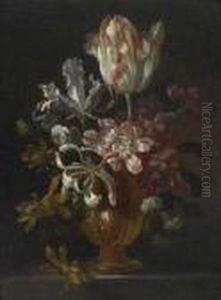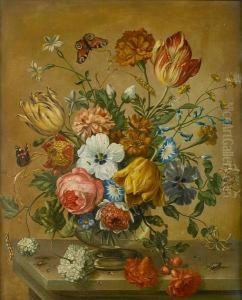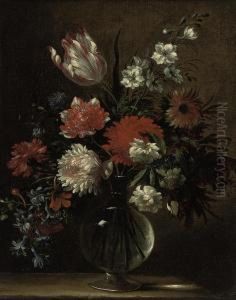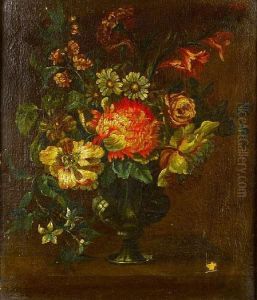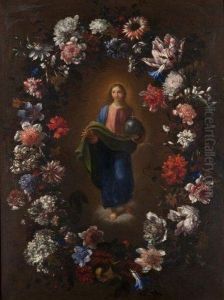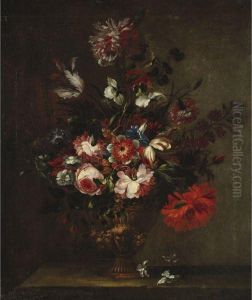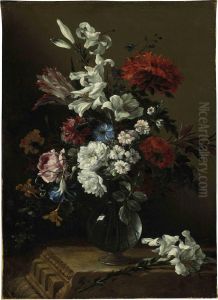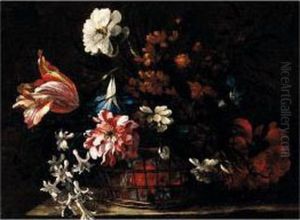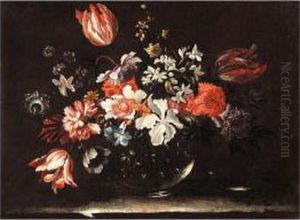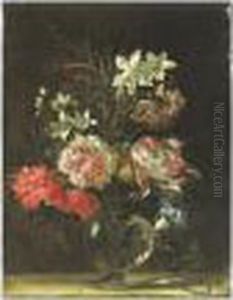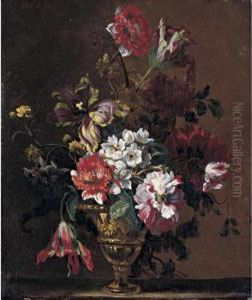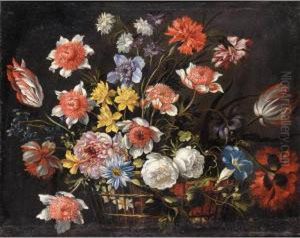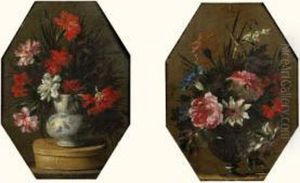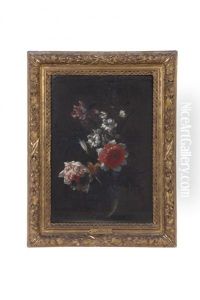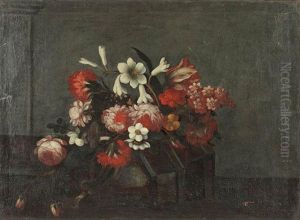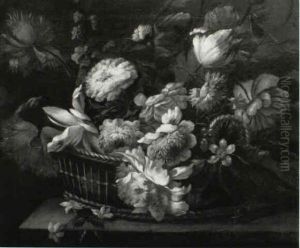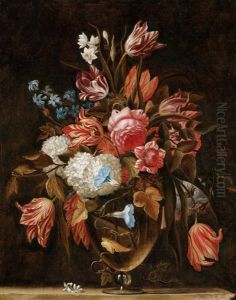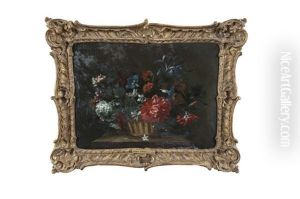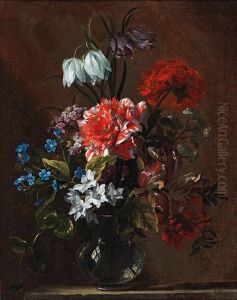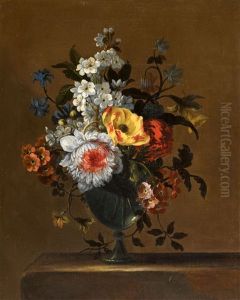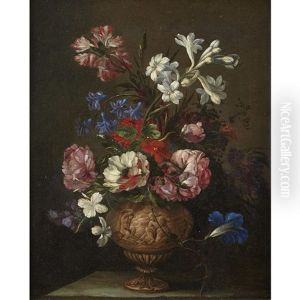Nicolas Baudesson Paintings
Nicolas Baudesson was a French painter who specialized in still-life paintings, particularly known for his depictions of flowers and fruits. His life is not as well documented as many of his contemporaries, and the year of his birth remains unclear. However, it is known that he was active during the 17th century, a period when still-life painting was gaining popularity in Europe, especially in France and the Netherlands. Baudesson was part of a group of painters sometimes referred to as the 'Lyon School,' although he spent a significant part of his career in Paris.
Baudesson’s works are characterized by their detailed realism and vibrant use of color. He was adept at capturing the texture and variety of surfaces, from the delicate petals of flowers to the shiny skins of fruits. His compositions often included a rich array of objects, which aside from their aesthetic appeal, were also laden with symbolic meaning, a common practice among still-life painters of his time. For example, flowers might symbolize the brevity of life, while fruits could represent abundance or the seasons.
Despite the lack of detailed records about his life, Baudesson's paintings were evidently well regarded, as they were collected by art connoisseurs and patrons of the arts during his lifetime. Unfortunately, after his death in Paris in 1670, his name, like many artists of his era, fell into relative obscurity. Today, however, scholars of still-life painting acknowledge his contributions to the genre, and his works can be found in various art museums and private collections. They serve not only as examples of the technical skill and aesthetic sensibilities of the time but also provide insight into the cultural and symbolic language of the seventeenth-century France.








